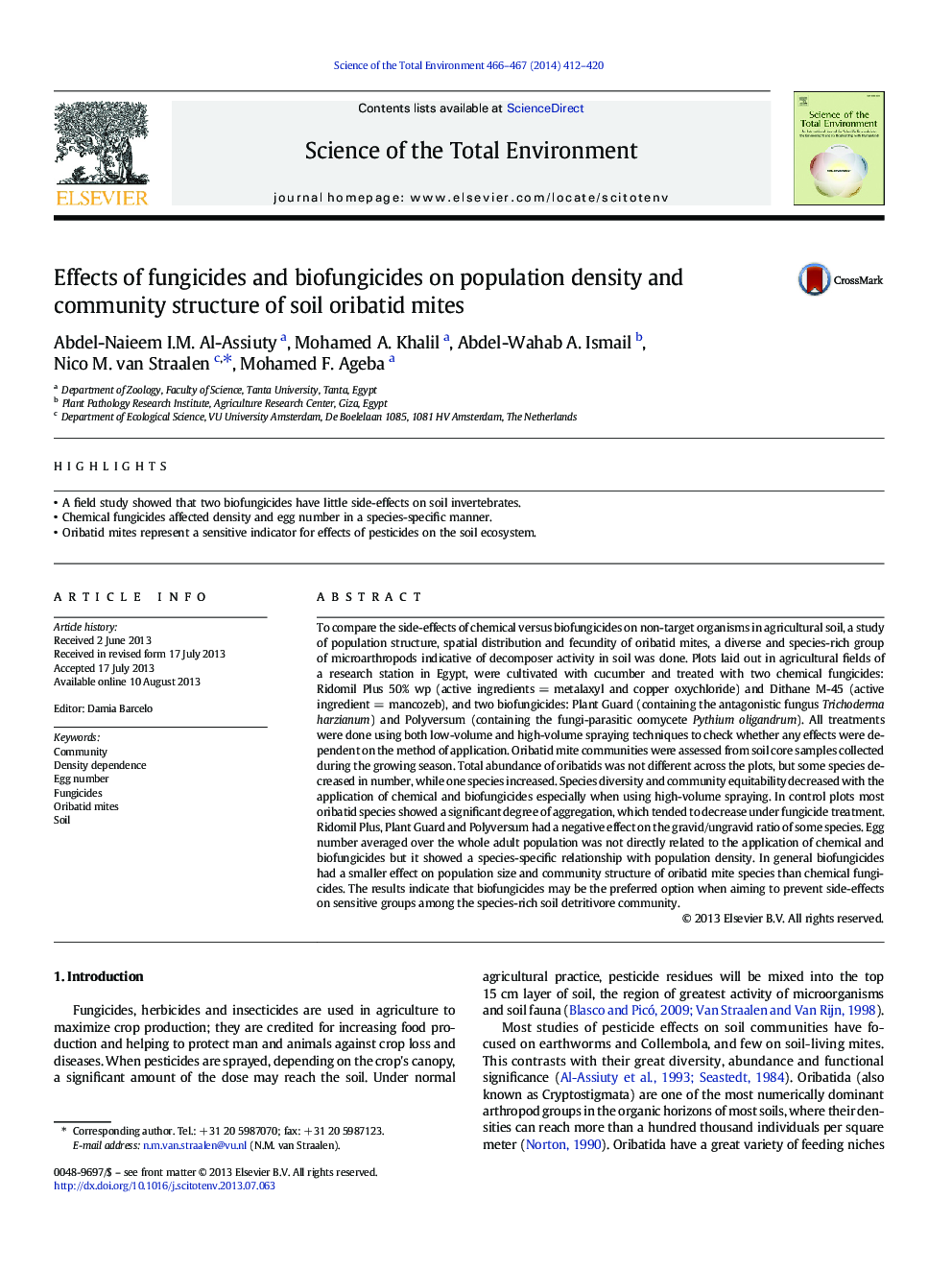| Article ID | Journal | Published Year | Pages | File Type |
|---|---|---|---|---|
| 6332241 | Science of The Total Environment | 2014 | 9 Pages |
Abstract
To compare the side-effects of chemical versus biofungicides on non-target organisms in agricultural soil, a study of population structure, spatial distribution and fecundity of oribatid mites, a diverse and species-rich group of microarthropods indicative of decomposer activity in soil was done. Plots laid out in agricultural fields of a research station in Egypt, were cultivated with cucumber and treated with two chemical fungicides: Ridomil Plus 50% wp (active ingredients = metalaxyl and copper oxychloride) and Dithane M-45 (active ingredient = mancozeb), and two biofungicides: Plant Guard (containing the antagonistic fungus Trichoderma harzianum) and Polyversum (containing the fungi-parasitic oomycete Pythium oligandrum). All treatments were done using both low-volume and high-volume spraying techniques to check whether any effects were dependent on the method of application. Oribatid mite communities were assessed from soil core samples collected during the growing season. Total abundance of oribatids was not different across the plots, but some species decreased in number, while one species increased. Species diversity and community equitability decreased with the application of chemical and biofungicides especially when using high-volume spraying. In control plots most oribatid species showed a significant degree of aggregation, which tended to decrease under fungicide treatment. Ridomil Plus, Plant Guard and Polyversum had a negative effect on the gravid/ungravid ratio of some species. Egg number averaged over the whole adult population was not directly related to the application of chemical and biofungicides but it showed a species-specific relationship with population density. In general biofungicides had a smaller effect on population size and community structure of oribatid mite species than chemical fungicides. The results indicate that biofungicides may be the preferred option when aiming to prevent side-effects on sensitive groups among the species-rich soil detritivore community.
Related Topics
Life Sciences
Environmental Science
Environmental Chemistry
Authors
Abdel-Naieem I.M. Al-Assiuty, Mohamed A. Khalil, Abdel-Wahab A. Ismail, Nico M. van Straalen, Mohamed F. Ageba,
